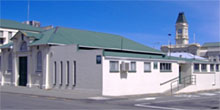Ratings explanation
The ratings are based on a 1000 point scale. It is expected that most players will fall between 200 and 800 points. This gives room at the bottom for new players, and room at the top for the arrival of a grand master or two.
Ratings are adjusted according to how each pair performs in each session of play. For every unexpected win, a pair gains 2 rating points, and for each unexpected loss the pair loses 2 points. In each session the expected number of wins for a pair is calculated by comparing the rating for the pair with the ratings of other competing pairs (i.e. those in the same N-S or E-W section in a Mitchell, or other pairs in a Howell section).
To take an example: Suppose you are competing against 12 other pairs and your expected number of wins is calculated to be 8.7. If you come third in that section then you have done better than 10 other pairs, so your actual number of wins is 10, which is 1.3 wins better than expected and your rating will improve by 2*(1.3) which rounds to 3 points. If you do badly and finish bottom, your actual number of wins is 0 and you have performed 8.7 worse than expected — your rating will decrease by 2*(8.7), rounding to 17 points.
Pair ratings are calculated as the average of the individual ratings. Adjustments to the ratings are applied equally to both members of the pair.
The expected number of wins for a pair is based on a statistical formula. The likelihood of one pair beating another is related to the difference of their ratings. A useful guide is that an advantage of 100 points on the ratings scale corresponds to one pair beating another 76% of the time. That is, if your pair rating is 100 points above another pair, then you should beat them about 3 times out of 4 in the long run.
Boost 
When a player is moving quickly up the ratings, a rating boost can be given where there is an established positive trend; this accelerates their rating towards its natural position. The boost is awarded when the player gains over 5 ratings points in each of 5 consecutive sessions, and consists of the latest increment being doubled; the result is shown using a green marker rather than the usual red  marker.
marker.Analysis
The current analysis involves all normal pairs events this year, with initial ratings being set at 100 (Junior), 300 (Intermediate), 500 (Senior) and 700 (Open). The event sessions/sections are listed at the left of the main page, with ratings at the right. At the top of the page is a histogram showing the distribution of points at the end of the analysis, together with how the original divisions have spread over the ratings.Individuals
Clicking on a member name will show further analysis information for that person. Each session where they played is shown together with the number (N) of opponents in their section, their expected number of wins (Exp), the actual number of wins (Win) and their final adjusted rating. The graph at right shows the progress.The second full-width graph shows the same progress but also reveals the pair rating (solid grey blob) and the ratings of the opponents (open grey blobs) before that session.
You will observe that the rankings of most members have settled down. There are exceptions, of course, with some players still having positive or negative trends.
John Shanks
Back to Ratings